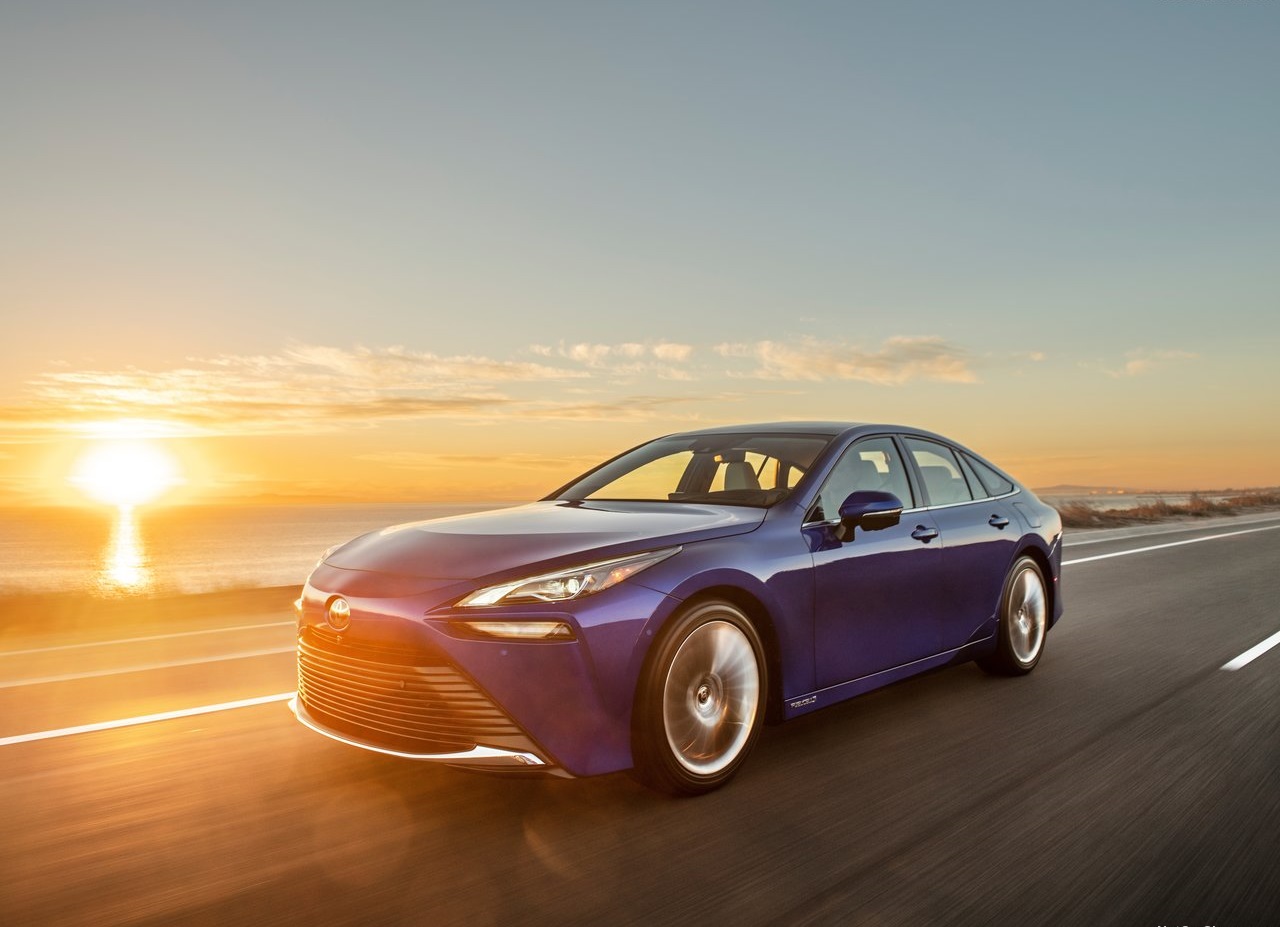New generation Mirai is being launched, a car that takes FCEV technology to a higher level and offers more emotional customer appeal in terms of dynamic, contemporary styling and more rewarding driving performance. A comprehensively redesigned fuel cell system, intelligent packaging and aerodynamic efficiency help extend the driving range to around 650 km, with no other emissions than pure water. The basic concept of hybrid power has successfully been adapted to produce Hybrid Electric (HEV), Plug-in Hybrid Electric (PHEV), Battery Electric (BEV) and – starting with the Mirai – Fuel Cell Electric Vehicles (FCEV). Each has qualities suited to different mobility requirements: for example, BEVs for shorter commutes and urban driving; HEVs and PHEVs for general and longer distance personal travel; and FCEVs for larger and heavier passenger cars, heavy-duty vehicles and public transport. Toyota began development of a hydrogen fuel cell electric vehicle in 1992, successfully introducing the Mirai sedan to world markets in 2014. This breakthrough achievement was founded on the company’s world-leading experience in hybrid technology, the core technology for a wide range of different electrified vehicle powertrains.

Adopting the GA-L platform has allowed the fuel cell stack and drivetrain components to be repackaged in a way that makes more efficient use of space. The result is a more spacious, five-seat cabin and a better chassis balance. Perhaps most significantly, it enables three high-pressure hydrogen tanks to be fitted, increasing fuel capacity and the car’s driving range – by 30%. The tanks are arranged in a “T” configuration, the longest running longitudinally and centrally beneath the vehicle floor, with two smaller tanks set laterally beneath the rear seats and luggage compartment. Together they can hold 5.6 kg of hydrogen, compared to 4.6 kg in the current Mirai’s two tanks. Their position contributes to the car’s lower centre of gravity and avoids compromising load space. The new architecture also permits the all-new hydrogen fuel cell to be moved from its current location beneath the floor to the front compartment (equivalent to the engine bay), while the (more compact) high-voltage battery and electric motor are positioned above the rear axle. As explained below, powertrain layout has been optimised to give new Mirai a 50:50 front:rear weight distribution.

The unit also incorporates the Fuel Cell DC-DC Converter (FDC) and modular high-voltage parts, while achieving a 21% reduction in size compared to the current system. Weight has been cut by 2.9 kg to 25.5 kg. Advanced technology has contributed to the space-saving, with Toyota’s first-time use of a next generation silicon carbide semiconductor material in the intelligent power model (IPM) transistors. This enables an increase in output and lower power consumption while using fewer transistors, which in turn allows the FCPC to be made smaller. Focusing on innovation and improvement in every component has delivered a 50% weight reduction yet a 12% increase in power. The same size and weight-saving approach has been applied to other parts of the FC stack. The air intake is designed for low pressure loss and contains sound-absorbing material so that noise from the air inlets is unnoticeable in the cabin. The exhaust uses a resin pipe and is designed to allow for a large amount of air and water to be discharged; a larger-capacity silencer contributes to the quieter cabin. The complete air system is almost 30% smaller than in the current Mirai and weighs more than a third (34.4%) less.

In developing the new Mirai, Toyota was committed to delivering all-round improvements to increase customer appeal, from its performance capabilities to the way it looks and drives. A priority has been to improve its driving range compared to the first generation model and going beyond the distances typically achieved by battery electric vehicles. The new Toyota Mirai is equipped with lithium-ion high-voltage battery in place of the current model’s nickel-metal hydride unit. Although smaller in size, it is more energy-dense, giving higher output and superior environmental performance. Containing 84 cells, it has a 310.8 rated voltage compared to 244.8, and a 4.0 Ah capacity, versus 6.5 Ah. Overall weight has been reduced from 46.9 to 44.6 kg. The output has improved from 25.5 kW x 10 seconds to 31.5 kW x 10 seconds. The battery’s smaller dimensions have allowed it to be positioned behind the rear seats, avoiding intrusion in the load compartment. An optimised air-cooling path has been designed, with discreet inlets either side of the rear seats.















